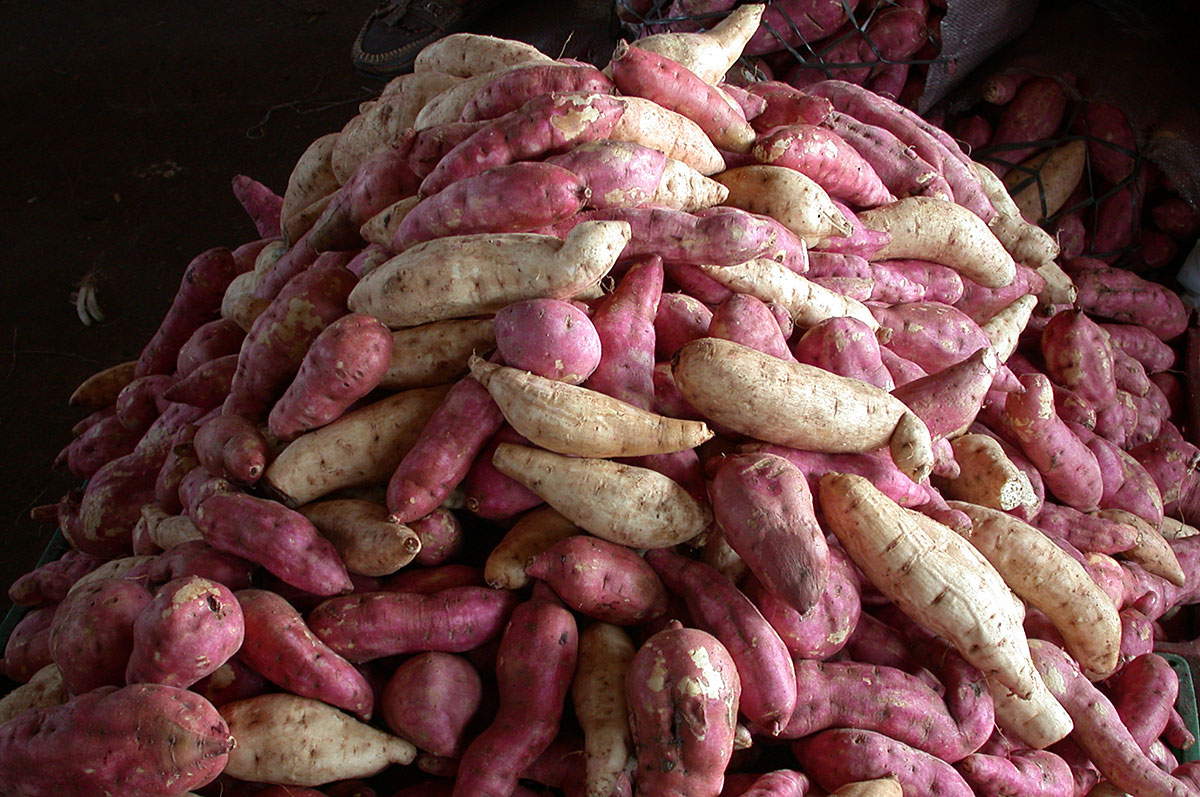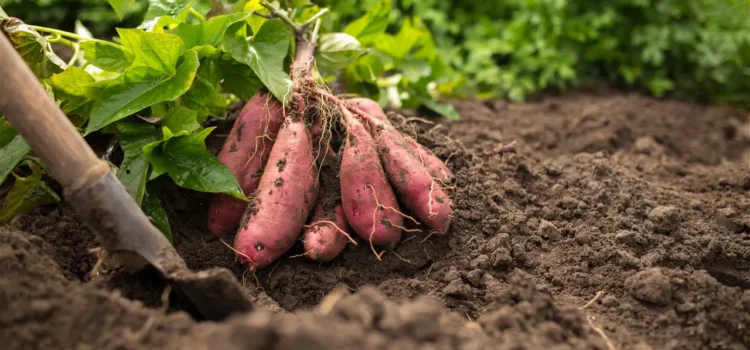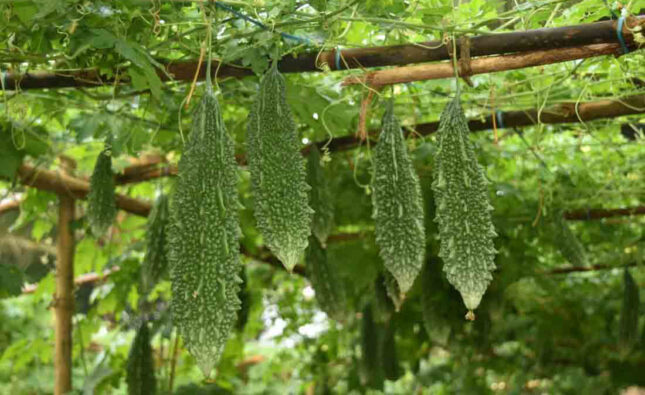Sweet Potato Cultivation, Varieties, Sales & Export: A Complete Guide
The sweet potato (Ipomoea batatas) is a root vegetable that belongs to the Convolvulaceae family. It is widely cultivated and consumed around the world due to its delicious sweet flavor, versatility in cooking, and nutritional benefits. Sweet potatoes have a tuberous root that varies in color, ranging from orange, red, purple, to white, depending on the variety. The orange-fleshed sweet potato is the most common type and is often associated with the vibrant color and sweetness that characterizes this vegetable.
Origin: The sweet potato is believed to have originated in Central or South America over 5,000 years ago. It was later spread to other parts of the world through trade and exploration. Today, it is grown in many countries, including the United States, China, India, Nigeria, and Indonesia, among others.
Cultivation Of Sweet Potato
The cultivation of sweet potatoes involves several steps, from preparing the soil to harvesting the mature tubers. Here is a general overview of the sweet potato cultivation process:
1. Soil Preparation:
Sweet potatoes thrive in well-drained, loose, and sandy soil. Before planting, the soil should be tilled to a depth of about 8-10 inches (20-25 cm) to ensure good root penetration. Compost or well-rotted organic matter can be added to enrich the soil with nutrients.
2. Planting:
Sweet potatoes can be grown from slips, which are small rooted sprouts taken from mature sweet potatoes. The slips are planted directly into the soil, typically in rows. The spacing between the slips and rows will depend on the specific variety being cultivated.
3. Watering:
Sweet potatoes require consistent moisture during their growing season, but they should not be waterlogged. Regular irrigation is necessary, especially during dry periods. Drip irrigation or soaker hoses are recommended to provide even and adequate water distribution.
4. Fertilization:
Fertilizing the sweet potato plants is essential for optimal growth and tuber development. A balanced fertilizer with a higher concentration of potassium is suitable for sweet potatoes. Application rates should follow the recommendations based on soil tests and specific nutrient requirements.
5. Weed Control:
Weeding is crucial to prevent weed competition and ensure that sweet potato plants receive adequate nutrients and water. Manual weeding and mulching with straw or other organic materials can help suppress weed growth.
6. Vine Management:
Sweet potato plants produce sprawling vines that can cover a large area. Vine management, such as trimming or training the vines, can help maintain plant health and improve airflow.
7. Pest and Disease Control:
Sweet potatoes are susceptible to various pests and diseases. Regular monitoring and appropriate pest and disease management practices, such as crop rotation and using organic or chemical controls as needed, can help protect the crop.
8. Harvesting:
Sweet potatoes are typically ready for harvest about 90 to 150 days after planting, depending on the variety and growing conditions. The leaves of the plants will begin to yellow, indicating that the tubers are mature. Carefully dig the sweet potatoes out of the soil using a fork or spade to avoid damaging the tubers.
9. Curing and Storage:
After harvesting, sweet potatoes need to be cured for about 10 days in a warm and humid environment. This process toughens the skin, heals wounds, and enhances their flavor. Once cured, store the sweet potatoes in a cool, dry, and well-ventilated area to extend their shelf life. Curing and proper storage are essential steps to ensure that sweet potatoes maintain their quality, flavor, and nutritional value over an extended period. Here’s a guide on how to cure and store sweet potatoes:
Curing Sweet Potatoes:
1. Harvest at the Right Time: Sweet potatoes are ready for harvest when their vines start to yellow and die back. Harvest them carefully using a fork or spade to avoid damaging the tubers.
2. Handle with Care: After harvesting, handle the sweet potatoes gently to prevent bruising or cuts, as these can lead to spoilage during storage.
3. Cure in a Warm Environment: Curing is a process that toughens the skin, heals minor injuries, and enhances the sweetness and flavor of sweet potatoes. Place the harvested sweet potatoes in a warm and humid environment for about 10 days. The curing temperature should be around 80-85°F (27-29°C) with high humidity (85-90%).
4. Curing Options: You can cure sweet potatoes in various ways:
-
- In a warm and humid storage room or basement with good ventilation.
- On raised racks or shelves to allow for air circulation around the sweet potatoes.
- In a homemade curing box, made by enclosing the sweet potatoes in a plastic-covered area with a humidifier.
Storing Sweet Potatoes:
- Choose the Right Storage Location: Once the curing process is complete, transfer the sweet potatoes to a cool, dry, and well-ventilated storage area. The ideal storage temperature is around 55-60°F (13-15°C) with a relative humidity of 60-70%.
- Check for Damage: Before storing, inspect the sweet potatoes again for any signs of damage or rot. Discard any damaged or spoiled tubers to prevent them from affecting others during storage.
- Storage Containers: Store sweet potatoes in wooden crates, baskets, or well-ventilated containers. Avoid using plastic bags, as they can trap moisture and promote mold growth.
- Avoid Refrigeration: Sweet potatoes should not be stored in the refrigerator, as the low temperatures can negatively impact their flavor and texture.
- Regular Inspection: Periodically check stored sweet potatoes for signs of decay or sprouting. Remove any affected ones promptly to prevent the spread of spoilage.
Storage Duration:
Under proper storage conditions, sweet potatoes can be stored for several months. However, the exact storage duration can vary depending on the sweet potato variety, curing process, and storage conditions. Regularly inspecting the stored sweet potatoes will help ensure they remain in good condition for as long as possible.
By following these steps for curing and storage, you can enjoy the delicious taste and nutritional benefits of sweet potatoes well beyond the harvest season.
Commercial Varieties of Sweet Potato
There are numerous commercial varieties of sweet potatoes, each with its own unique characteristics in terms of flavor, color, texture, and culinary uses. The choice of sweet potato variety can vary depending on the region, climate, and market preferences. Here are some popular commercial varieties of sweet potatoes:
1. Beauregard:
Beauregard is one of the most widely grown and popular sweet potato varieties. It has a reddish-orange skin and a deep orange flesh. This variety is known for its sweet flavor and is commonly used for both fresh consumption and processing into various products like fries and chips.
2. Covington:
Covington sweet potatoes have a coppery-brown skin and vibrant orange flesh. They are known for their excellent sweetness, moisture, and versatility in cooking. Covington is a favored variety for making sweet potato pies, casseroles, and other desserts.
3. Jewel:
Jewel sweet potatoes have a bright orange skin and orange flesh. They are sweet and have a smooth, creamy texture when cooked. This variety is widely used for baking, roasting, and making mashed sweet potatoes.
4. Carolina Ruby:
Carolina Ruby sweet potatoes have a deep red skin and a sweet, red-orange flesh. They are often used for fresh consumption, as well as in processed products like sweet potato fries.
5. Japanese Sweet Potato:
Japanese sweet potatoes come in various colors, including purple, white, and red. They have a chestnut-like flavor and a firm, slightly drier texture compared to other sweet potato varieties. Japanese sweet potatoes are often used in Asian cuisines and can be roasted, steamed, or mashed.
6. Garnet:
Garnet sweet potatoes have a reddish-purple skin and a bright orange flesh. They have a sweet and nutty flavor, making them suitable for various culinary uses, including baking and frying.
7. Hannah:
Hannah sweet potatoes have a tan-colored skin and a light, creamy flesh. They are less sweet compared to other varieties, with a more delicate flavor. Hannah sweet potatoes are often used for making sweet potato fries.
8. O’Henry:
O’Henry sweet potatoes have a pale copper skin and a creamy white flesh. They have a sweeter taste and a smoother texture compared to traditional white sweet potatoes. O’Henry sweet potatoes are used for various cooking methods, including boiling and baking.
9. Centennial:
Centennial sweet potatoes have a pale copper skin and orange flesh. They are known for their rich, sweet flavor and are commonly used for fresh consumption and baking.
Nutrition Profile:
Sweet potatoes are not only delicious but also highly nutritious. They are an excellent source of various vitamins, minerals, and fiber. The orange-fleshed sweet potatoes are particularly rich in beta-carotene, a precursor of vitamin A. A 100-gram serving of cooked sweet potato provides approximately:
- Calories: 86 kcal
- Carbohydrates: 20 grams
- Dietary Fiber: 3 grams
- Protein: 1.6 grams
- Fat: 0.1 grams
- Vitamin A: 19,218 IU (382% of the Daily Recommended Intake)
- Vitamin C: 2.4 mg (4% of the Daily Recommended Intake)
- Potassium: 337 mg (9% of the Daily Recommended Intake)
- Vitamin B6: 0.2 mg (8% of the Daily Recommended Intake)
- Manganese: 0.3 mg (15% of the Daily Recommended Intake)

Culinary Uses:
Sweet potatoes can be prepared in a variety of ways and used in both savory and sweet dishes. They can be boiled, baked, steamed, roasted, fried, or mashed. Some common culinary uses of sweet potatoes include:
- Baked Sweet Potato Fries: A healthier alternative to regular French fries, sweet potato fries are popular snacks or side dishes.
- Sweet Potato Casseroles: Sweet potatoes can be combined with ingredients like marshmallows and cinnamon to create delectable casseroles.
- Mashed Sweet Potatoes: Similar to mashed potatoes, sweet potatoes can be mashed with butter and milk for a creamy and flavorful side dish.
- Sweet Potato Pie: Sweet potato pie is a classic dessert that showcases the natural sweetness and smooth texture of this root vegetable.
Health Benefits of sweet potato
Sweet potatoes are not only delicious but also packed with essential nutrients and health-promoting compounds. Incorporating sweet potatoes into your diet can provide a wide range of health benefits. Here are some of the key health benefits of sweet potatoes:
1. Rich in Nutrients:
Sweet potatoes are a nutritional powerhouse, containing vitamins, minerals, and antioxidants. They are an excellent source of vitamin A (beta-carotene), vitamin C, manganese, and potassium.
2. Antioxidant Properties:
Sweet potatoes are rich in antioxidants, such as beta-carotene, which help neutralize harmful free radicals in the body. Antioxidants play a crucial role in reducing oxidative stress and protecting cells from damage.
3. Supports Vision:
The high vitamin A content in sweet potatoes is essential for maintaining healthy vision and eye health. Vitamin A is crucial for the proper functioning of the retina and can help prevent age-related macular degeneration.
4. Boosts Immune System:
The combination of vitamins A and C in sweet potatoes strengthens the immune system, helping the body defend against infections and illnesses.
5. Regulates Blood Sugar:
Despite their sweetness, sweet potatoes have a relatively low glycemic index, which means they cause a slower and steadier rise in blood sugar levels. This makes them a suitable option for individuals with diabetes or those looking to manage blood sugar levels.
6. Heart Health:
Sweet potatoes are a good source of potassium, which helps regulate blood pressure and supports cardiovascular health. The fiber content in sweet potatoes also aids in reducing bad cholesterol levels.
7. Promotes Digestive Health:
Sweet potatoes are rich in dietary fiber, which promotes healthy digestion and regular bowel movements. Fiber also helps in preventing constipation and maintaining a healthy gut.
8. Anti-Inflammatory Properties:
Sweet potatoes contain anti-inflammatory compounds that may help reduce inflammation in the body and alleviate symptoms of inflammatory conditions.
9. Weight Management:
The fiber content in sweet potatoes contributes to a feeling of fullness, making them a satisfying addition to meals. They can help with weight management by curbing appetite and reducing overeating.
10. Skin Health:
The high levels of vitamins A and C, along with antioxidants, support skin health, promote collagen production, and may help reduce signs of aging.
11. Reduces Cancer Risk:
Some studies suggest that the antioxidants and anti-inflammatory compounds in sweet potatoes may play a role in reducing the risk of certain types of cancer.
12. Improves Brain Function:
The presence of antioxidants and nutrients like choline in sweet potatoes can help support brain health and cognitive function.

Pest & Disease Control in Sweet Potato
Controlling diseases in sweet potato cultivation is crucial to ensure healthy plants and a successful harvest. Sweet potatoes are susceptible to various diseases caused by fungi, bacteria, viruses, and nematodes. Here are some essential disease control measures for sweet potato crops:
1. Plant Disease-Resistant Varieties:
Selecting disease-resistant sweet potato varieties is the first line of defense against common diseases. Disease-resistant cultivars are less susceptible to infections, reducing the risk of severe outbreaks.
2. Crop Rotation:
Implement a crop rotation system to prevent the build-up of soil-borne pathogens. Avoid planting sweet potatoes or other related crops in the same area for consecutive seasons.
3. Sanitation:
Practice good sanitation in the field and during handling. Remove and destroy infected plant debris to prevent the spread of diseases.
4. Use Certified Disease-Free Planting Material:
Start with healthy and certified disease-free planting material, such as disease-free slips or cuttings, to ensure disease-free plant establishment.
5. Healthy Soil Management:
Maintain good soil health and fertility through proper nutrient management and organic matter incorporation. Healthy plants are better equipped to resist diseases.
6. Proper Irrigation:
Avoid over-irrigation, as waterlogged soil can create conditions favorable for certain diseases. Provide adequate and well-drained irrigation.
7. Pest and Disease Monitoring:
Regularly inspect plants for any signs of diseases or pests. Early detection allows for timely intervention and better disease management
8. Chemical Control:
In severe disease outbreaks, fungicides or bactericides may be used to control diseases. However, it’s essential to follow proper application guidelines and consider the environmental impact.
9. Biological Control:
Some beneficial microorganisms or biological agents can help suppress disease-causing pathogens. Using biocontrol agents can be a more sustainable approach to disease management.
10. Quarantine Measures:
Practice quarantine measures to prevent the introduction of new diseases. Inspect and monitor incoming planting material to ensure it is disease-free.
11. Virus Management:
To manage virus diseases, use certified virus-tested planting material, and control aphid vectors that spread viral infections.
12. Nematode Control:
Nematodes can cause root damage and yield loss in sweet potatoes. Use nematode-resistant varieties and consider soil solarization to reduce nematode populations.
Sales and Export of Sweet Potato
Sales and export of sweet potatoes have seen significant growth in recent years due to their increasing popularity and nutritional benefits. Sweet potatoes are now considered a versatile and healthy option in various cuisines around the world. Here are some key points regarding the sales and export of sweet potatoes:
Sales of Sweet Potatoes:
1. Local Markets:
Sweet potatoes are widely available in local markets and grocery stores in countries where they are grown. They are commonly sold as fresh produce and can be found in various shapes, sizes, and colors.
2. Processed Products:
Sweet potatoes are also processed into various products such as sweet potato fries, chips, puree, and canned sweet potatoes. These processed items offer convenience and can cater to different consumer preferences.
3. Health Food Stores:
Sweet potatoes have gained popularity among health-conscious consumers and are often sold in health food stores due to their rich nutrient profile and potential health benefits.
4. Restaurants and Food Service Industry:
Many restaurants and food service establishments use sweet potatoes in their menus, offering dishes like sweet potato fries, sweet potato casserole, and sweet potato-based desserts.
5. Online Sales:
With the rise of e-commerce, sweet potatoes are also available for purchase through online platforms, making them accessible to a broader customer base.
Export of Sweet Potatoes:
1. International Demand:
The export of sweet potatoes has increased due to rising global demand. Countries like the United States, China, Egypt, Nigeria, and Vietnam are major exporters of sweet potatoes.
2. Processing for Export:
Some countries export processed sweet potato products, such as frozen sweet potato fries or dried sweet potato chips, to meet the demand for convenience foods in international markets.
3. Health Trends:
The growing awareness of sweet potatoes’ health benefits in other countries has contributed to an increase in their export.
4. Food Industry Demand:
Sweet potatoes are used as ingredients in various food products, including baby foods, bakery products, and ready-to-eat meals, which further drives their export.
5. Tariffs and Trade Agreements:
The export of sweet potatoes can be influenced by tariffs, trade agreements, and import regulations in different countries.
Challenges:
1. Perishability:
Fresh sweet potatoes have a limited shelf life and may require special storage and transportation conditions for international export.
2. Quality and Standards:
Exporters need to adhere to quality standards and regulations of importing countries to ensure that sweet potatoes meet the required criteria.
3. Competition:
Sweet potato export faces competition from other starchy vegetables and convenience foods available in the global market.







